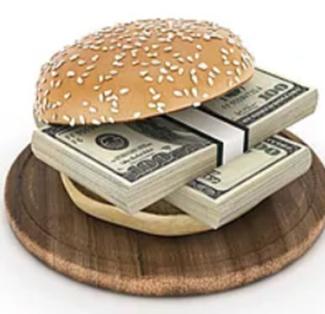
The 50 Dollar Sandwich Economy
If you are walking into The French Laundry, a 3 star michelin restaurant in Napa, you may well expect to pay $50 plus for a sandwich extraordinaire. Not so, when you walk into your average sandwich place. I almost fell out of my chair when the person cutting my hair told me she was going to be charged $50 for a chicken sandwich at a local eatery in Walnut Creek, La Fontaine. She had paid $20 for a sandwich one day, $30 the next and then a few days later was presented with the $50 price tag. She declined the sandwich.
While this may be an extraordinary tale of sandwich inflation and who knows what else, the reality is that the cost of eating out has gone up significantly, but this is sandwich madness. Yes, Russia and Ukraine are two of the largest exporters of wheat and there will be supply shortages that impact prices worldwide. The Russia-Ukraine situation has also sent gas prices soaring. Gas prices have risen to some of the highest in recent USA history. However, has America stopped growing its own wheat and raising it's own chickens? Of course not. So, why is a local sandwich shop in Walnut Creek charging $50 for a chicken sandwich? Is it the best chicken sandwich in Walnut Creek? Probably not.
The supply chain issues have given opportunity for corporate and business greed to inflate as well. While some price increases may be justified, of course, some price increases across a range of industries ranging from 50-500% are quite literally "out of this world" and unjustified by any rational commercial standards.
Given that these price increases are firmly embedded in the economy and not abating, it raises the questions how this situation in combination with higher gas costs and food prices is going to keep impacting the global economy. Fears of a recession are front and center in the markets, in the midst of these continuing economic shocks. It is probably also a foregone conclusion that the Fed will raise rates at least once. All these factors present serious headwinds to growth and create a risk-off environment. However, risk-off has it's challenges too. Money in cash or bonds is a losing proposition while record inflation numbers abound. Risk mitigation measures necessitate decision making amidst a lot of scenarios that carry risk. Gold and short-instruments may prove more effective for risk-mitigation than cash and bonds. More sophisticated management is required to navigate today's macro-economic conditions.
When you have to accommodate client needs by age, retirement or soon-to-be-retired status, the solutions need to be more tailored.
The impact of all these forces on the global economy is to dampen growth prospects and create a risk-off preference. As COVID restrictions lift, new outbreaks surface in Asia and while the hope is that supply chain issues will be more resolved towards the end of the year, in the interim, economic conditions are getting more challenging.
While a near-term resolution to the Russia-Ukraine conflict is unlikely, it is not impossible. Financial pressures on Russia are significant as they become more isolated from the global monetary system. Consumers in Russia are already feeling the consequences with higher interest rates, loss of wealth in the markets, and reduced access to many goods and services. Despite the toll on the Russian economy and population, the more probable outcome is still a longer term conflict waged by a dictator whose personal goals for Russia outweigh all other concerns. If domestic unrest was to reach unseen levels, perhaps this might sway Putin's choices.
There is significant uncertainty in the world and markets at large and the next few months are likely to remain volatile.

